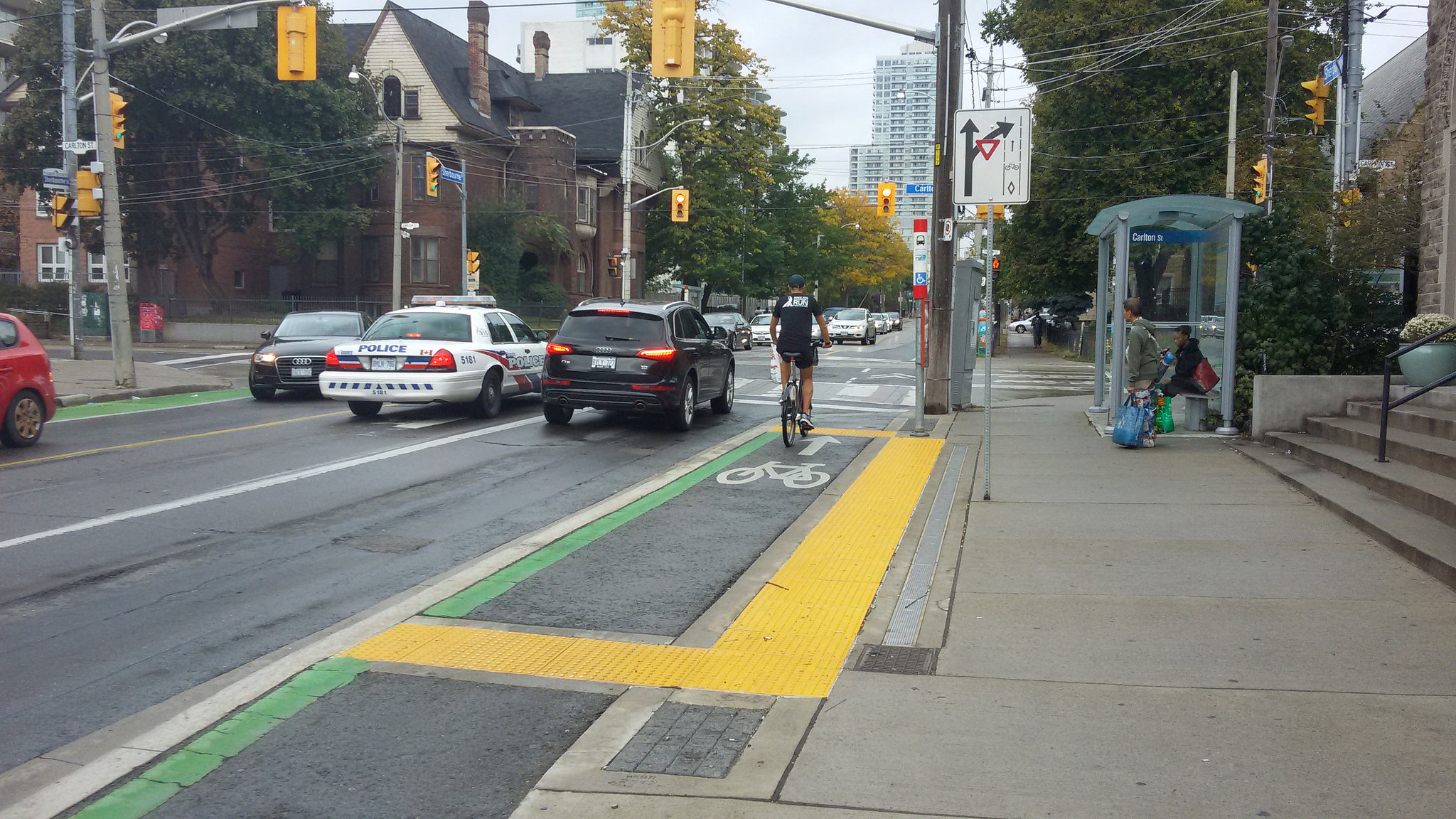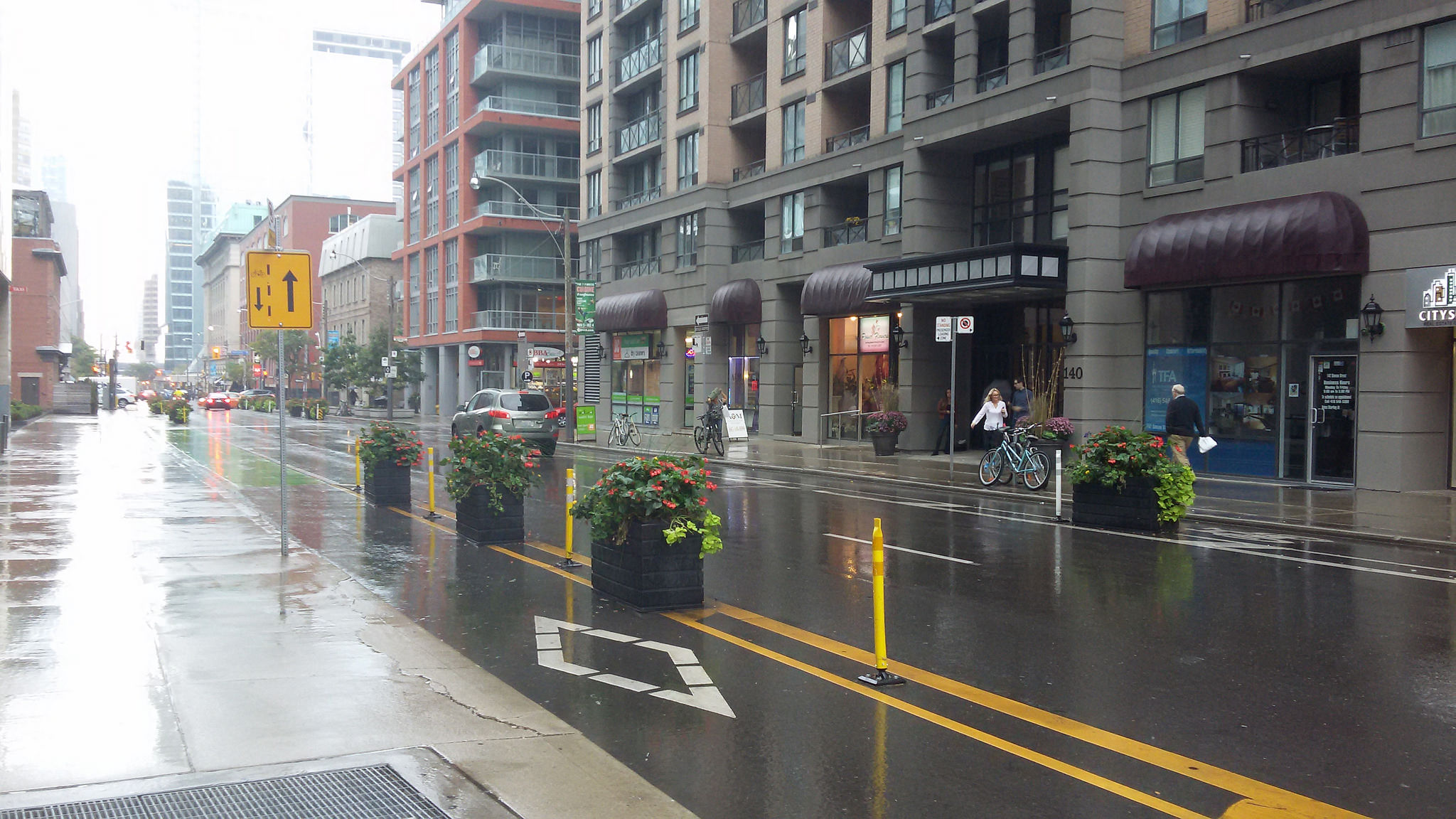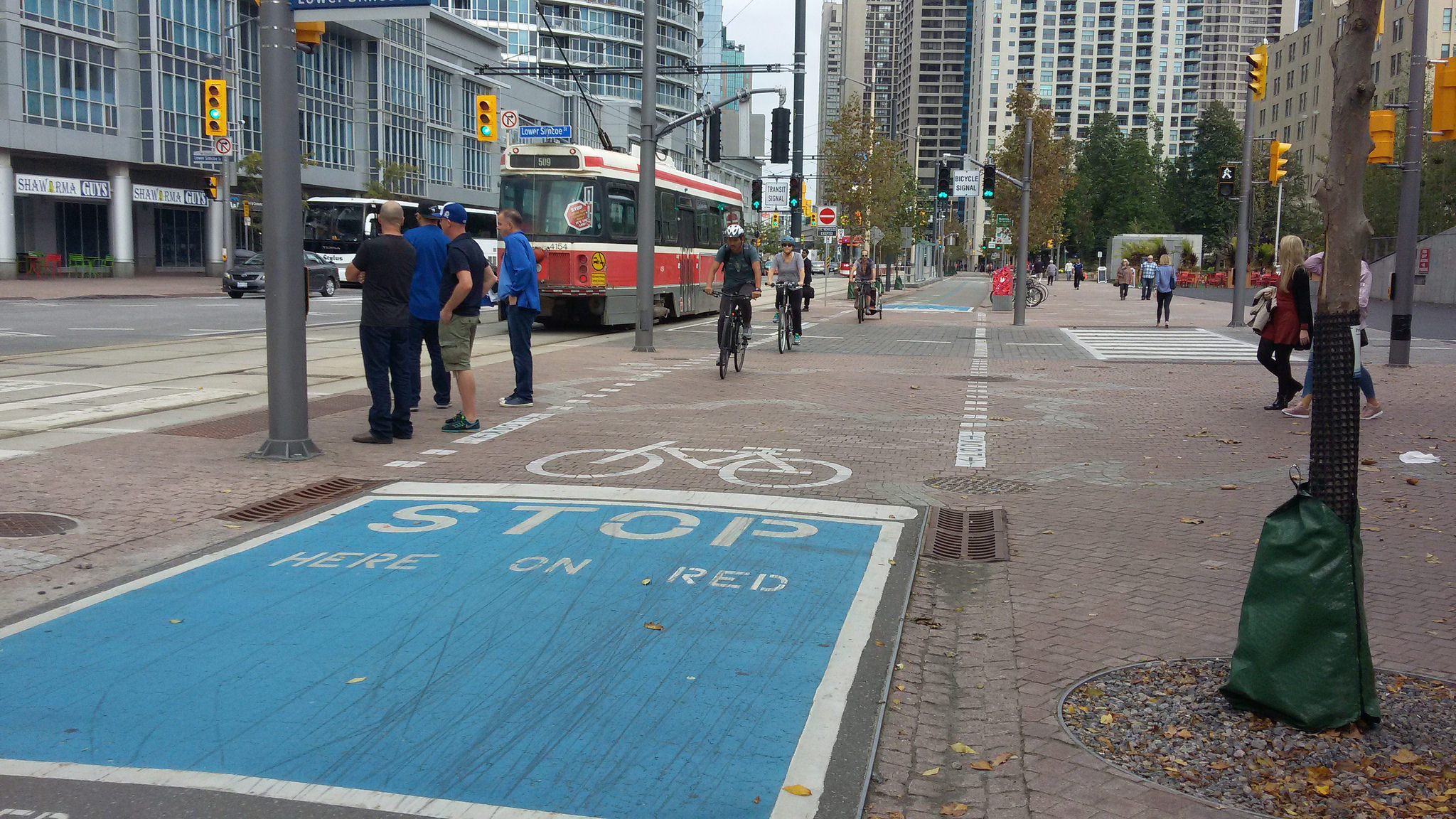I've been told that Torontonians don't let the weather get in the way of their daily life. I can attest to that from my site visits on Monday, as I was definitely not the only person on a bike whilst the proverbial cats and dogs were raining down. I was also told that what I experienced was tame; like Denver and Chicago, Toronto also has a significant helping of snow during winter time, and thus cycleways need to be designed with snow removal and freeze-thaw cycles in mind.
Toronto has a great collection of off-road shared trails for walking and cycling, and is working towards "growing, connecting and upgrading" its network of separated cycleways in the downtown area, which began in earnest in 2010. The introduction of separated facilities has seen a marked increase in cycling use, for example on Sherbourne Street, a two-way road, where one-way cycleways were installed on either side, some sections at road level with kerb separators and other sections at footpath level. Approximately 1,000 cyclists per day used the corridor before the installation; 2014 counts show that this has quadrupled with the introduction of separated cycleways.

Most of the cycleways are one-way, either on one-way or two-way streets. Intersections generally involve filter turning of vehicles through cycle movements, without any form of cycle head start or partial protection. The transportation manager from the city I met with says this seems to be working well, except for in locations with lower cycle volumes where motorists are less likely to be aware of cyclists. He also said that in some locations where the pedestrian crossing phase begins before the general traffic, cyclists ride on the pedestrian phase - I believe this is because they feel it's safer.
The city's toolkit for minimising conflict between vehicles and cyclists at intersections includes: advanced stop boxes; green paint; markings; banning right turn on red; restricting turns. Although, from what I saw, these treatments are not commonly used at sites. I already commented on the scarcity of advanced stop boxes / lines in a previous city, and am becoming more aware these sorts of treatments, while now common in New Zealand, have not been so quickly adopted in North America. Allowing right turns on red (the equivalent of turning left at a red light in NZ) was introduced to achieve efficiency gains, thus there is resistance to revoking this possibility at numerous locations.
Simcoe Street is an interesting example because it involves a section of one-way street with cycleways on both sides of the road, i.e. one in the contraflow direction. It's a nice place to cycle, with planter boxes in the buffer, which are funded through a levy from local businesses as part of a "Business Improvement Area" scheme. I was surprised, however, to see at certain intersections that there is very little guidance in the way of signage etc to warn motorists to expect cyclists in the contraflow direction, and no form of signal protection to avoid this conflict.

It has been good to see this approach of allowing filer turning as a wide-spread practice, but my feeling is that it would be too risky to introduce this to New Zealand in the same way. It would be necessary to mitigate further, by physical and phasing treatments. On the other hand, I don't think that the approach of providing fully-protected cycle movements (like is done in most of Chicago) would work in Toronto, because the cycle and pedestrian volumes are not as high, and the inefficiencies involved would probably lead to non-compliance and therefore safety issues.


